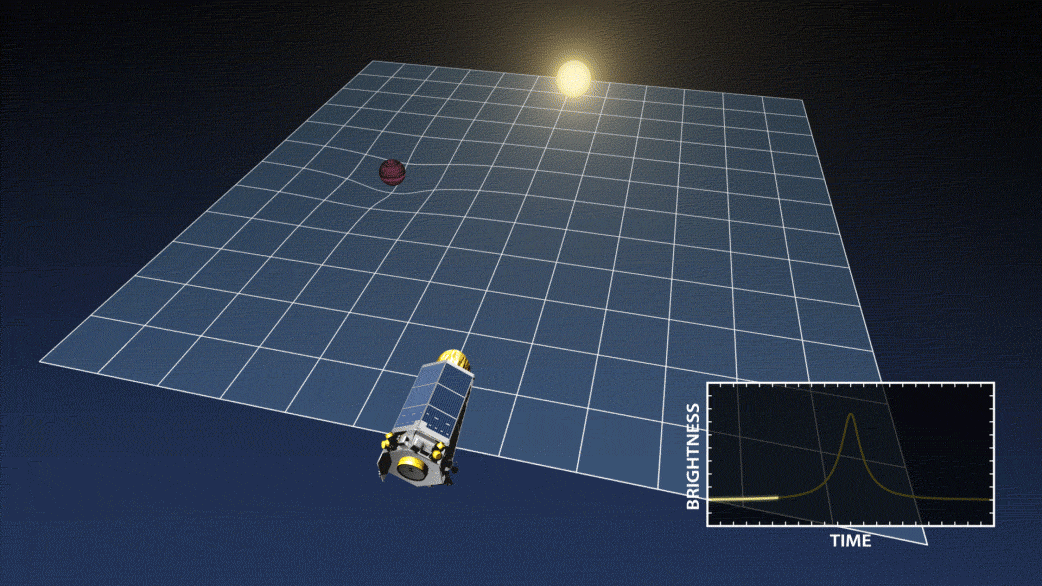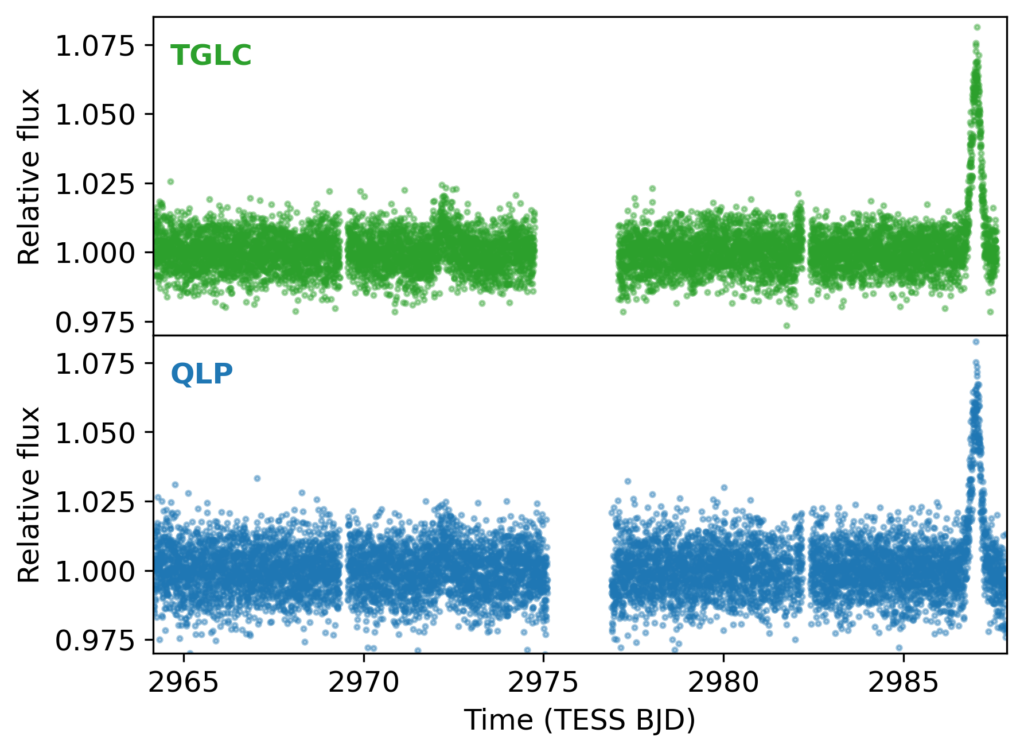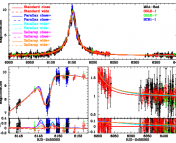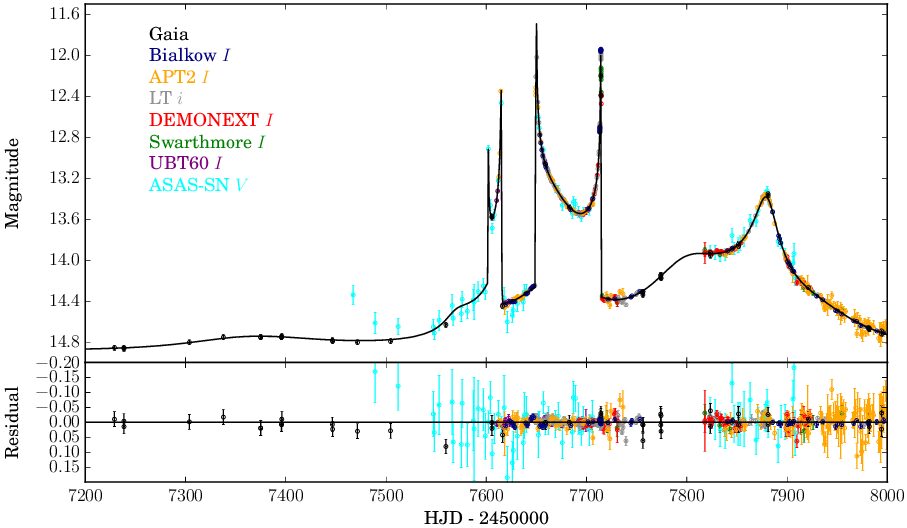Title: Searching for Free-Floating Planets with TESS: I. Discovery of a First Terrestrial-Mass Candidate
Authors: Michelle Kunimoto, William DeRocco, Nolan Smyth, Steve Bryson
First authors’ institutions: Kavli Institute for Astrophysics and Space Research, Massachusetts Institute of Technology and Santa Cruz Institute for Particle Physics, University of California, Santa Cruz
Status: Submitted to Monthly Notices of the Royal Astronomical Society [open access]
An exoplanet is a planet that orbits a star other than the Sun. Or is it? The workhorse techniques of exoplanet detection and characterization, transits and radial velocities, detect planets via effects on their host stars. Stars are bright compared to planets, making them much easier to observe directly. Detecting free-floating planets (FFPs), planetary-mass objects unbound to any star, requires a completely different toolset.
Gravitational Lensing
Microlensing is a type of gravitational lensing in which a background (source) star appears temporarily brighter due to near alignment with a foreground (lens) star and/or planet. Most of us are familiar with glass lenses that bend and focus light, such as how a magnifying glass can focus enough light at a point to start a fire (please do NOT try this at home). A gravitational lens can likewise bend the trajectory of light and cause a distant star to temporarily appear brighter than usual, as shown in Figure 1.

The near-exact alignment of two objects is rare, which led Einstein to conclude in a 1936 paper that “there is no hope of observing this phenomenon directly.” Such an alignment is also temporary due to the relative motion between the observer, lens, and source. A microlensing event with a terrestrial-mass FFP lens would last approximately hours while events with stellar lenses typically last weeks or months. While these events are indeed rare, several surveys have hunted for and found microlensing events starting in the 1990s, including Microlensing Observations in Astrophysics (MOA) and Optical Gravitational Lensing Experiment (OGLE).
Microlensing with TESS
The Transiting Exoplanet Survey Satellite (TESS) is a satellite mission designed primarily to detect exoplanets via the periodic dimming of stars. However, TESS has several features that make it a promising tool for microlensing: 1) high-precision photometry from space, 2) wide field of view, and 3) high-cadence, with brightness measurements recorded every 200 seconds. Though TESS observes almost the entire sky every two years, the authors of today’s paper search through one sector (61) for microlensing events.
TESS Sector 61 includes observations of a single field taken from Jan. 18 – Feb. 12, 2023. The Full Frame Images include ~1.3 million stars sufficiently bright for analysis. TESS uses a procedure called the Quick-Look Pipeline (QLP) to produce light curves, showing how bright a star is over time, from raw data. The authors take great care to remove poor-quality points from the light curves, systematic effects from TESS, and long-term astrophysical trends.
To find transiting exoplanet candidates, TESS employs the box least squares (BLS) algorithm which attempts to fit a light curve with a series of boxy (aka upside down top hat) periodic dimming events. Today’s authors adapt an implementation of BLS to search for a single brightening event characteristic of microlensing. 58,303 signals were found initially, most of which were automatically screened out as false positives associated with non-unique events, TESS systematics, or having asymmetry characteristic of stellar flares. The authors then reject signals associated with known asteroids or that show signatures of an asteroid trail.

122 candidates remained, most of which were quickly ruled out with manual inspection for showing, for example, stellar variability or light curve defects. Only two high-SNR events remained, associated with stars TIC-123147666 and TIC-107150013. The authors then checked previous TESS observations of each star, and they found previous brightening events for TIC-123147666, suggesting it is not a one-off microlensing event. The authors find no repeating events for TIC-107150013 and no indications of significant stellar activity. With this last remaining candidate, the authors run a consistency check by producing another light curve with the TESS-Gaia Light Curve (TGLC) procedure, which corrects for contamination from nearby stars. The two light curves are shown in Figure 2.
With their two light curves of TIC-107150013, the authors fit two microlensing models to characterize the candidate event. Unfortunately, microlensing models do not uniquely constrain the mass of the lens, which is the main parameter of interest. The distance to the source star from Gaia is ~3.2 kpc, but the distance to the potential FFP lens is unknown. The authors’ model fit suggests the mass is less than 10 Earth masses if the FFP is < ~2.6 kpc away and less than 1 Earth mass if the lens is < ~1 kpc away.
While it is far from a sure thing that this candidate is a microlensing event, searching for such events across all TESS sectors will yield interesting results on detecting and vetting FFP microlensing event candidates from space-based surveys. This is particularly important for upcoming microlensing surveys, such as the Galactic Bulge Time-Domain Survey of the Roman Space Telescope.
Postscript
Since today’s paper was released, there has been quite a flurry of activity. Another paper quickly claimed that the FFP candidate is likely a stellar flare. Using data from the aforementioned OGLE survey, the author finds evidence of stellar variability which can cause flares mimicking microlensing signals. Another paper calculated that only 0.0018 microlensing events are expected to occur in TESS Sector 61, with the authors suggesting the candidate is more likely to be a stellar flare.
The authors of today’s paper have since released a clarification note affirming that they did not claim to discover an FFP but “an event consistent with an FFP at the level of the light curve.” The authors state their revised manuscript will estimate the likelihood of the candidate being a flare compared to a microlensing event. Regardless of whether this particular candidate is a microlensing event, the procedure outlined in the original paper shows the difficulty of finding such events and could help quantify the occurrence rate of various microlensing false positives.
Astrobite edited by Pranav Satheesh
Featured image credit: NASA/JPL




